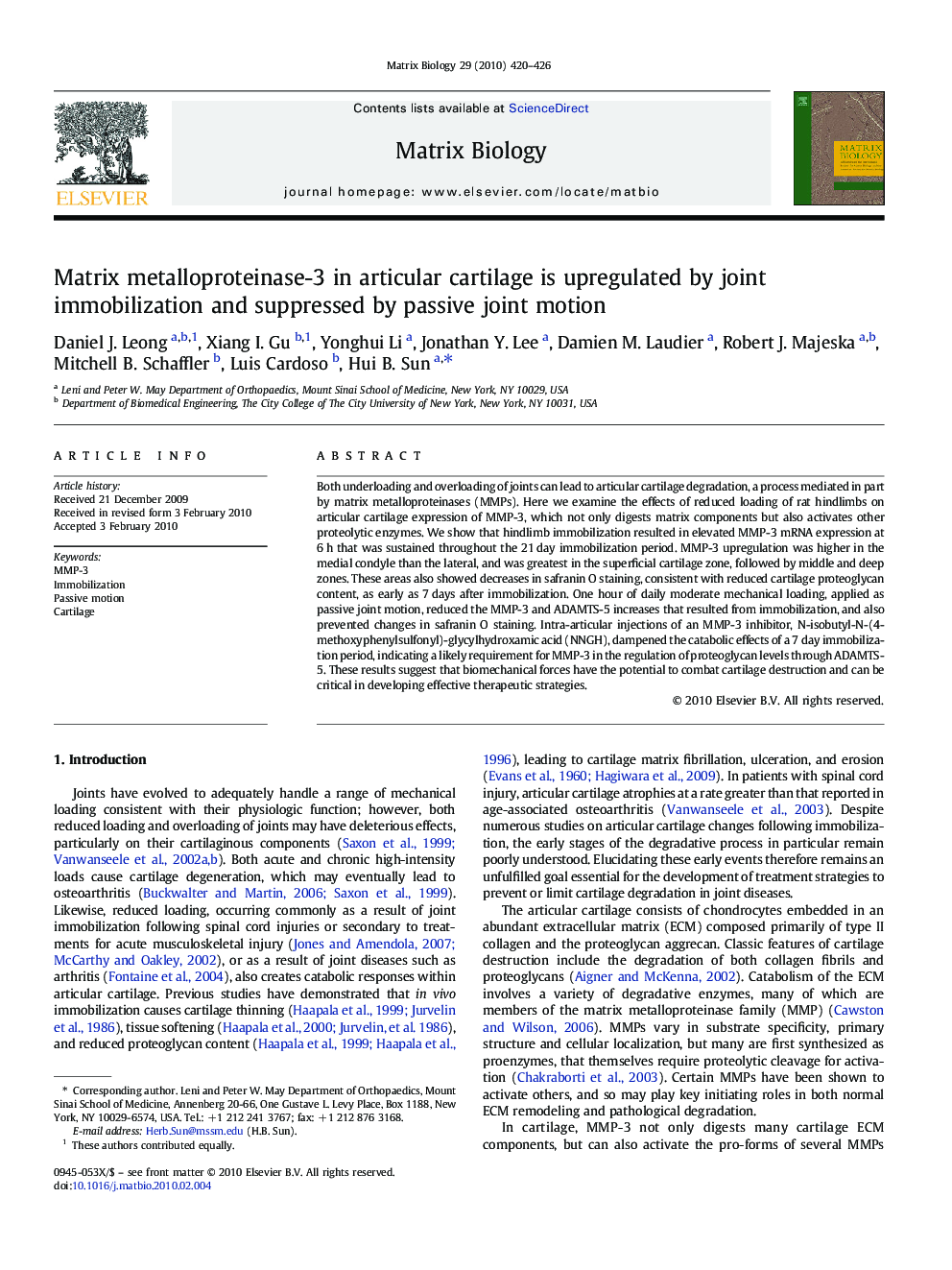| Article ID | Journal | Published Year | Pages | File Type |
|---|---|---|---|---|
| 2145001 | Matrix Biology | 2010 | 7 Pages |
Both underloading and overloading of joints can lead to articular cartilage degradation, a process mediated in part by matrix metalloproteinases (MMPs). Here we examine the effects of reduced loading of rat hindlimbs on articular cartilage expression of MMP-3, which not only digests matrix components but also activates other proteolytic enzymes. We show that hindlimb immobilization resulted in elevated MMP-3 mRNA expression at 6 h that was sustained throughout the 21 day immobilization period. MMP-3 upregulation was higher in the medial condyle than the lateral, and was greatest in the superficial cartilage zone, followed by middle and deep zones. These areas also showed decreases in safranin O staining, consistent with reduced cartilage proteoglycan content, as early as 7 days after immobilization. One hour of daily moderate mechanical loading, applied as passive joint motion, reduced the MMP-3 and ADAMTS-5 increases that resulted from immobilization, and also prevented changes in safranin O staining. Intra-articular injections of an MMP-3 inhibitor, N-isobutyl-N-(4-methoxyphenylsulfonyl)-glycylhydroxamic acid (NNGH), dampened the catabolic effects of a 7 day immobilization period, indicating a likely requirement for MMP-3 in the regulation of proteoglycan levels through ADAMTS-5. These results suggest that biomechanical forces have the potential to combat cartilage destruction and can be critical in developing effective therapeutic strategies.
